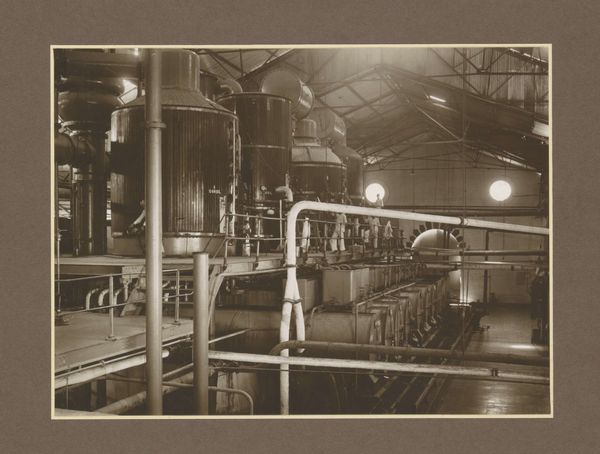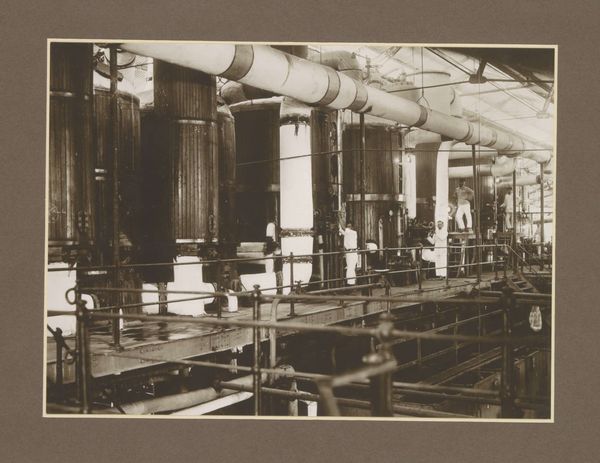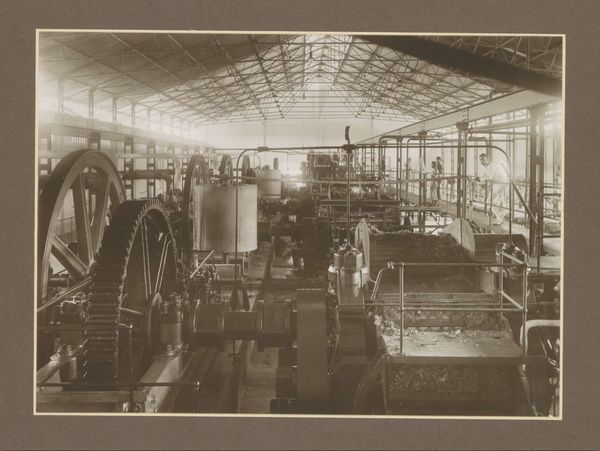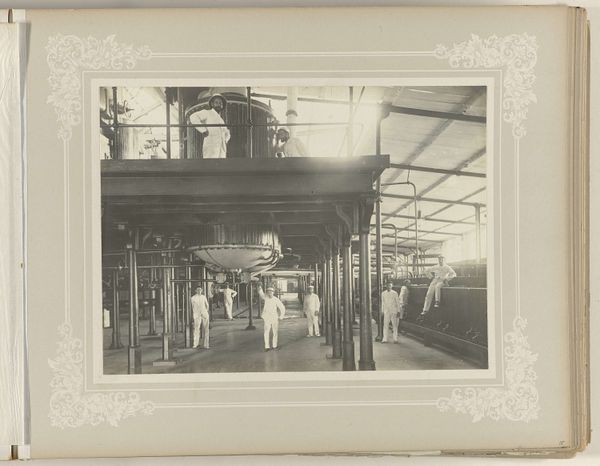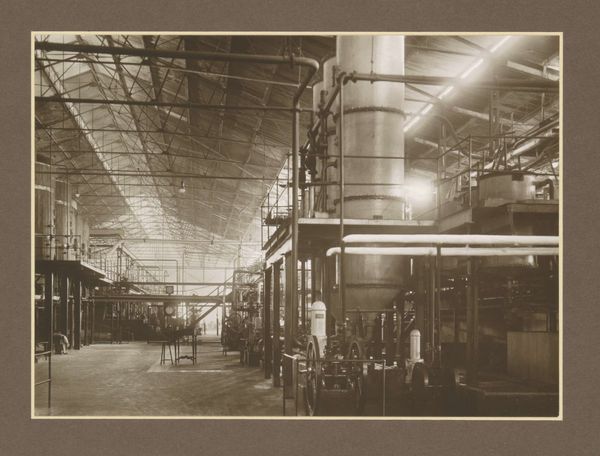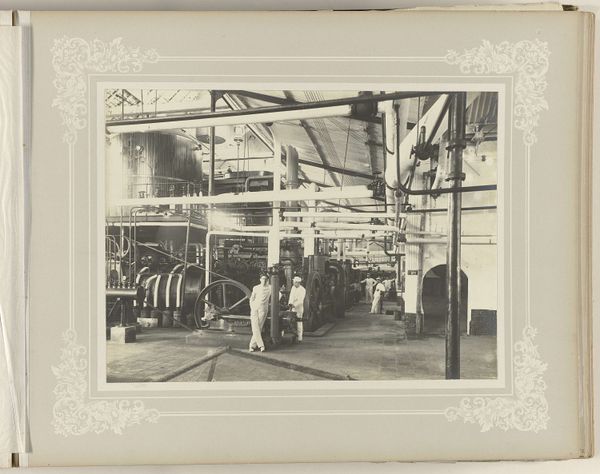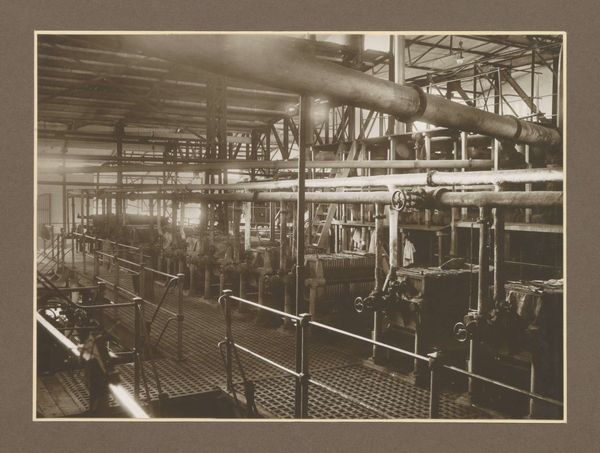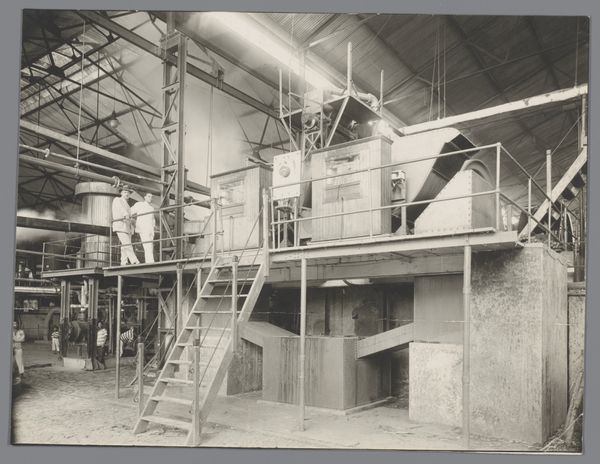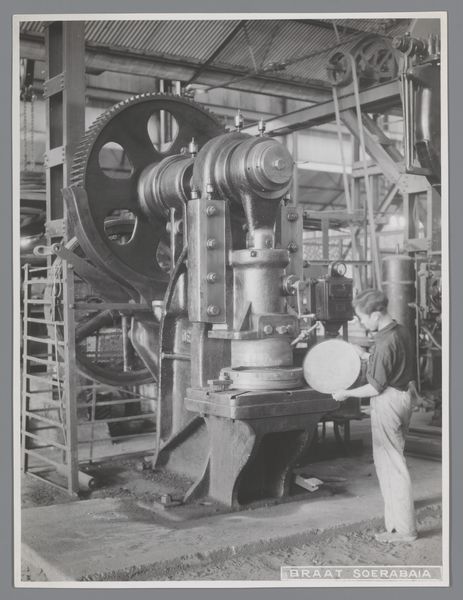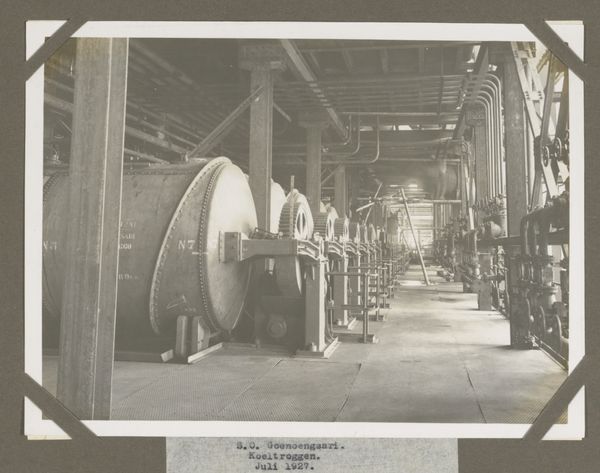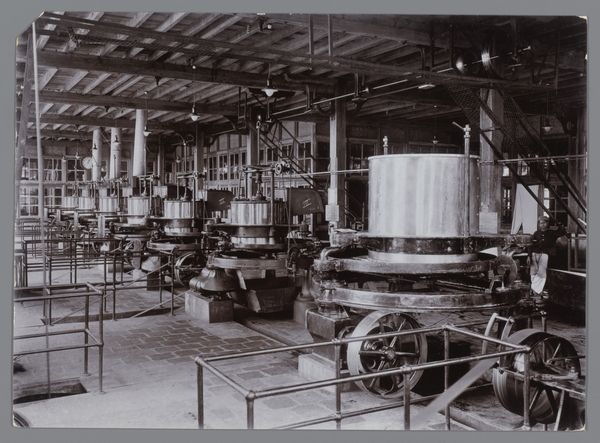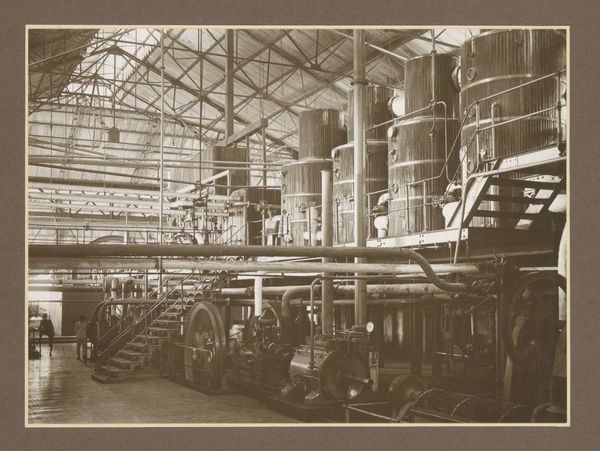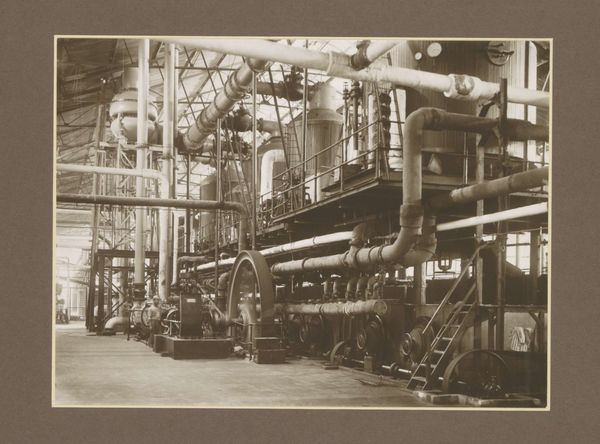
photography, gelatin-silver-print
#
landscape
#
photography
#
gelatin-silver-print
#
realism
Dimensions: height 170 mm, width 230 mm
Copyright: Rijks Museum: Open Domain
Curator: This photograph, titled "Machinehal in de suikerfabriek," or "Machine Hall in the Sugar Factory" was captured by Otto Hisgen sometime between 1890 and 1910. It's a gelatin silver print, showcasing a slice of industrial life. What's your initial reaction? Editor: My first impression is quiet intensity. The stark black and white palette adds to the almost clinical feel of the scene, even with the human figures present. There's a rigid, geometric quality to the machinery that's both fascinating and a little unsettling. Curator: Absolutely, there is a striking formality amidst all those pipes and cylinders. The workers seem almost posed. I'm drawn to the textural contrast. You've got the smooth metal surfaces juxtaposed against the dark, grainy wooden cladding. Editor: And it seems significant that the figures, all presumably workers, are sharply individuated and white. While class is the dominant lens here, it is impossible to divorce this image from the realities of labor practices and colonial structures inextricably bound up with the history of sugar production, isn't it? Curator: Certainly. Looking closer, that worker leaning against the equipment, it's like he is one cog relaxing amongst many. He knows the machine. Is he proud? Trapped? The image seems ambivalent. I feel like Hisgen understood not just the technology, but the atmosphere within it. The image isn't detached like a mere recording of space, there is almost some tenderness embedded within. Editor: Precisely. Even his seeming casualness is staged. The rigid composure we observe is about maintaining the veneer of authority within structures of exploitation. So how do we read his calm against that backdrop? Curator: You've made me think of something else, which is how different photography, and its intentions, have transformed across the century. Back then it would seem almost visionary to use photography to record and preserve the legacy of a sugar factory, its staff and equipment. These days, its role might be much more critical or confrontational. Editor: Indeed. Art doesn't exist in a vacuum; it actively engages in sociopolitical discourse, whether consciously or not. Looking at Hisgen's photograph, it serves as an artifact of that complex entanglement. Thank you for that interpretation. Curator: Thank you.
Comments
No comments
Be the first to comment and join the conversation on the ultimate creative platform.
